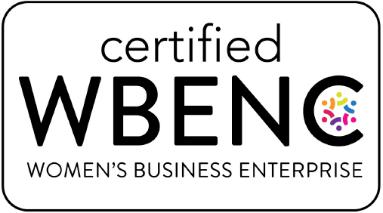Authored by:

Justin R. Muehlmeyer
Patent Attorney
All Posts by Justin
Likely, there is something about the way you do business, or the way you make products, or the technical aspects of your products, that are key to your competitive advantage. Such information might be what the law could protect as a trade secret. In many firms, trade secrets are among the most valuable intellectual property assets, key to the company’s success. That information might be known to your employees, so if they leave, they take with them knowledge of your company’s key assets. You don’t want your employees walking away with your company.
If the former employee takes that information and uses it elsewhere, you may have a claim of trade secret misappropriation against them. But lawsuits surrounding trade secrets are extremely expensive and complicated. The key to minimizing adverse trade secret legal actions is prevention – by developing and adhering to rigorous policies for onboarding new employees and offboarding departing personnel, along with conducting ongoing training for company personnel. Here are some points to keep in mind.
- Distribute valuable trade secret information on a “need to know” basis to minimize risk. Carefully decide and review periodically which employees “need to know or use” trade secret information and restrict access authorization accordingly.
- Identify all valuable trade secrets and develop and put in place a trade secret protection policy and program.
- Educate employees about the importance of confidentiality and communicate relevant policies, including the penalty for breach of those policies.
- Apply physical and technological restrictions to access trade secrets, and implement policies relating to digital access and personal mobile devices.
- Limit and monitor public access to buildings that house trade secrets.
- Mark “secret” or “confidential” on all documents containing trade secrets to avoid inadvertent disclosure.
- Execute confidentiality agreements with relevant employees as well as with outsiders who may obtain access to an enterprise’s trade secrets.
- Conduct termination procedures to ensure compliance with confidentiality and trade secret agreements.
- Cultivate employee loyalty. Reducing turnover reduces the risk of losing trade secrets.
Onboarding
Most trade secret misappropriation occurs through individuals who had access to the information, such as former employees. Therefore, it is essential for all new employees to sign nondisclosure agreements as a condition of their employment. These agreements should cover not only the company’s own IP, but also third-party intellectual property (IP) because if the new employee brings to you trade secrets of their former employer, you are also at risk of misappropriation.
Along with detailing specific policies surrounding the protection of the company’s IP, your agreement with new employees should lay out any IP that the employee may have utilized or developed for a prior employer, and specifically prohibit its use in the employee’s new position. The agreement should also cover “prior inventions” the new employee owns. This ensures that the hiring company does not infringe on the new employee’s invention, but it’s also possible for the company to include a provision that the company reserves a nonexclusive right to use or modify the employee’s IP in her work with the company.
Training
Training represents an important aspect of protecting valuable trade secrets which cannot be left to chance. Most people will not purposely misappropriate trade secrets if they have been trained to understand what it is. Employees must be informed about what aspects of their work are confidential, and provided with clear guidelines concerning the proper handling of confidential IP. Managers must be trained to be particularly aware of how information is used by their subordinates and to constantly maintain the policies and procedures.
Offboarding
Departing personnel represent the greatest risk of improper disclosure of trade secrets. The offboarding process must include strategies for mitigating this threat. First and foremost, the departing employee should be reminded of any confidentiality agreements he or she signed. Even if the employee goes on to violate those agreements, the warning strengthens the company’s position in any subsequent legal action.
Company devices, especially those containing sensitive or confidential data, should be collected as soon as possible. The departing employee should be given a deadline to return any devices at his or her home or retained elsewhere outside company premises. Conditioning severance pay and or unused vacation pay on the return of company devices may ensure compliance. However, the employee’s computer access should be removed during – not before – the termination meeting to minimize the risk of stolen, concealed, or destroyed company data.
Each of these safeguards is vital to safeguarding trade secrets and protecting a company’s culture. Peacock Law can help you develop, implement and maintain policies and procedures to protect your trade secrets now and in the future.


